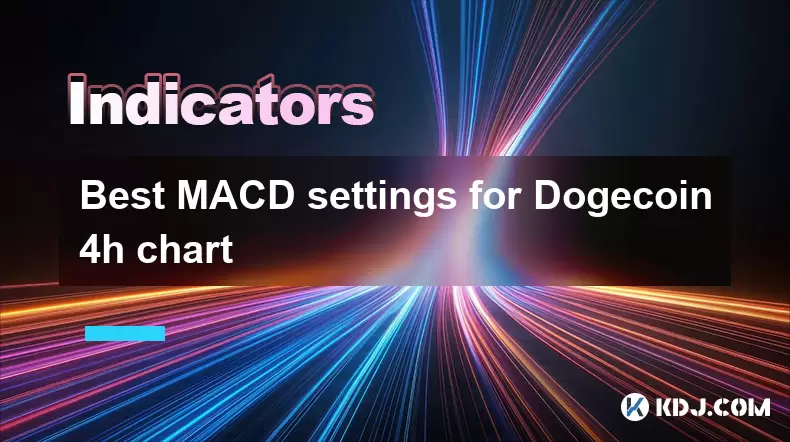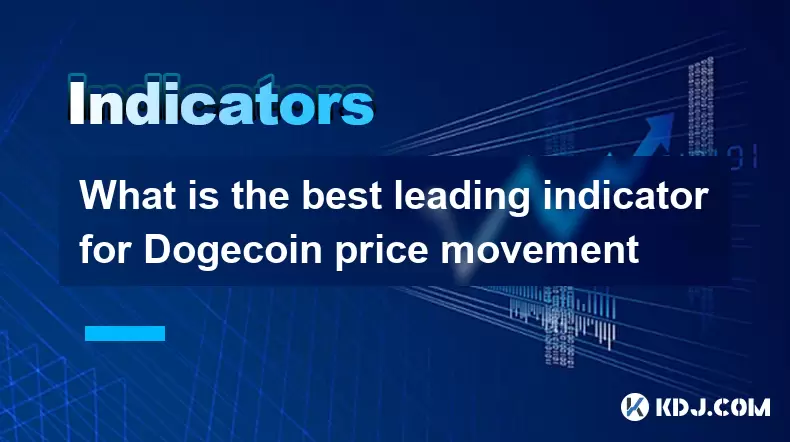-
 Bitcoin
Bitcoin $108,250.0992
0.11% -
 Ethereum
Ethereum $2,515.9404
0.03% -
 Tether USDt
Tether USDt $1.0003
0.00% -
 XRP
XRP $2.2166
-0.19% -
 BNB
BNB $656.5904
0.29% -
 Solana
Solana $147.4122
-0.58% -
 USDC
USDC $1.0000
-0.01% -
 TRON
TRON $0.2830
0.06% -
 Dogecoin
Dogecoin $0.1641
0.27% -
 Cardano
Cardano $0.5739
-0.19% -
 Hyperliquid
Hyperliquid $39.1463
-0.11% -
 Sui
Sui $2.8882
-0.02% -
 Bitcoin Cash
Bitcoin Cash $487.6428
0.31% -
 Chainlink
Chainlink $13.2097
0.07% -
 UNUS SED LEO
UNUS SED LEO $9.0308
0.10% -
 Avalanche
Avalanche $17.8608
0.13% -
 Stellar
Stellar $0.2379
-0.06% -
 Toncoin
Toncoin $2.7400
-0.39% -
 Shiba Inu
Shiba Inu $0.0...01144
-0.36% -
 Litecoin
Litecoin $87.5467
0.66% -
 Hedera
Hedera $0.1538
0.22% -
 Monero
Monero $315.5479
0.36% -
 Dai
Dai $1.0000
0.00% -
 Polkadot
Polkadot $3.3523
-0.71% -
 Ethena USDe
Ethena USDe $1.0003
0.01% -
 Bitget Token
Bitget Token $4.3960
-1.03% -
 Uniswap
Uniswap $7.2663
4.19% -
 Aave
Aave $272.8619
2.04% -
 Pepe
Pepe $0.0...09676
-0.18% -
 Pi
Pi $0.4586
-2.87%
Best MACD settings for Bitcoincoin 4h chart
Customizing MACD settings, like (5, 20, 5), improves trade signals for Dogecoin's volatile 4-hour chart.
Jul 06, 2025 at 11:01 am

Understanding the MACD Indicator in Cryptocurrency Trading
The Moving Average Convergence Divergence (MACD) is a widely used technical analysis tool among cryptocurrency traders. It helps identify potential trend reversals, momentum shifts, and entry or exit points. In the context of Dogecoin trading on the 4-hour chart, selecting the right MACD settings can significantly impact the accuracy of trade signals.
The standard MACD configuration includes three parameters: 12-period EMA (Exponential Moving Average), 26-period EMA, and a 9-period signal line. However, due to the volatile nature of Dogecoin and its unique market behavior, many traders adjust these values to better suit their strategy and time frame.
Optimal MACD Settings for Dogecoin's 4-Hour Chart
For the DOGE/USDT 4-hour chart, a commonly preferred alternative setting is (5, 20, 5). This means:
- Fast Line: 5-period EMA
- Slow Line: 20-period EMA
- Signal Line: 5-period EMA of the MACD line
This configuration enhances sensitivity and responsiveness to price changes while still filtering out excessive noise typical of shorter time frames. Traders often find this setup more effective than the default one because it adapts better to Dogecoin’s frequent spikes and dips.
Another alternative that some traders experiment with is (8, 21, 5). This balances sensitivity with stability, offering clearer crossovers without lagging too much behind price action.
How to Apply Custom MACD Settings on Trading Platforms
Setting up custom MACD values requires accessing the indicator settings on your preferred trading platform such as Binance, TradingView, or KuCoin. Below are detailed steps for each:
- Open your chosen platform and navigate to the Dogecoin 4-hour chart.
- Click on the “Indicators” or “Studies” button located at the top of the charting interface.
- Search for “MACD” in the list of available indicators.
- Select the MACD and click on the settings icon (usually a gear symbol).
- In the parameter fields, change the default values to your preferred ones like (5, 20, 5) or (8, 21, 5).
- Ensure the color scheme is distinguishable—many traders use green for bullish histograms and red for bearish ones.
After applying the settings, observe how the MACD reacts to recent price movements before using it in live trading.
Interpreting MACD Signals on Dogecoin Charts
Once the custom MACD is applied, traders should focus on crossovers, divergences, and histogram patterns:
- A bullish crossover occurs when the MACD line crosses above the signal line, suggesting a potential upward move.
- A bearish crossover happens when the MACD line drops below the signal line, indicating a possible downtrend.
- Histogram divergence can be a powerful sign; if the histogram forms lower highs while price makes higher highs, it may signal weakening momentum.
In the case of Dogecoin, which often experiences rapid pump-and-dump cycles, watching for early divergence signs can help avoid false breakouts and sudden corrections.
Combining MACD with Other Indicators for Better Accuracy
Using MACD alone may not provide sufficient confirmation, especially in highly volatile assets like Dogecoin. To enhance reliability, traders often combine it with:
- RSI (Relative Strength Index): Helps confirm overbought (>70) or oversold (<30) conditions.
- Volume Profile: Identifies key support/resistance zones where significant trading activity has occurred.
- EMA ribbons or Bollinger Bands: Provide dynamic support and resistance levels.
For example, if the MACD shows a bullish crossover and RSI is rising from below 30, it could indicate a stronger buy signal. Conversely, if RSI is above 70 and the MACD turns bearish, it might be a good time to consider exiting long positions.
Frequently Asked Questions
Q: Can I use the same MACD settings across all cryptocurrencies?
A: While some settings work well for multiple assets, each cryptocurrency has unique volatility and trading patterns. What works for Dogecoin may not perform equally well for Bitcoin or Ethereum. Always backtest before applying settings to a new asset.
Q: Should I always stick to one MACD setting once I choose it?
A: No, you can adjust settings based on current market conditions. During high volatility, a faster setting like (5, 20, 5) might give better signals, while during consolidation, slower settings may reduce false signals.
Q: How do I know if my MACD setting is giving false signals?
A: False signals occur when the MACD indicates a trend reversal, but the price doesn't follow through. You can track performance by journaling trades and analyzing win-loss ratios. If more than 60% of signals result in losses, consider adjusting the parameters.
Q: Is it better to use default MACD settings for beginners?
A: Beginners may benefit from starting with the default (12, 26, 9) setting to understand basic MACD behavior. Once familiar with how it reacts to price, they can experiment with customization tailored to specific assets like Dogecoin.
Disclaimer:info@kdj.com
The information provided is not trading advice. kdj.com does not assume any responsibility for any investments made based on the information provided in this article. Cryptocurrencies are highly volatile and it is highly recommended that you invest with caution after thorough research!
If you believe that the content used on this website infringes your copyright, please contact us immediately (info@kdj.com) and we will delete it promptly.
- Litecoin Breakout Watch: What Traders Need to Know Now
- 2025-07-06 16:50:13
- Bitcoin, Solana, Ethereum: Decoding the Latest Buzz on the Blockchain
- 2025-07-06 16:50:13
- Widnes Resident's 50p Could Be Your Ticket to Easy Street: Rare Coin Mania!
- 2025-07-06 16:55:13
- Bitcoin, Solaris Presale, and Token Rewards: What's the Buzz?
- 2025-07-06 16:55:13
- Ethereum Under Pressure: Price Drop Amid Global Uncertainties
- 2025-07-06 17:00:13
- XRP, SEC Case, and Prosperity: A New Era for XRP Holders?
- 2025-07-06 17:10:13
Related knowledge

How to spot manipulation on the Dogecoin chart
Jul 06,2025 at 12:35pm
Understanding the Basics of Chart ManipulationChart manipulation in the cryptocurrency space, particularly with Dogecoin, refers to artificial price movements caused by coordinated trading activities rather than genuine market demand. These manipulations are often executed by large holders (commonly known as whales) or organized groups aiming to mislead...

What is the significance of a Dogecoin engulfing candle pattern
Jul 06,2025 at 06:36am
Understanding the Engulfing Candle Pattern in CryptocurrencyThe engulfing candle pattern is a significant technical analysis tool used by traders to identify potential trend reversals in financial markets, including cryptocurrencies like Dogecoin. This pattern typically consists of two candles: the first one is relatively small and indicates the current...

Dogecoin monthly chart analysis for long term investors
Jul 06,2025 at 10:08am
Understanding the Dogecoin Monthly ChartFor long-term investors, analyzing the monthly chart of Dogecoin (DOGE) provides a macro view of its price behavior over extended periods. The monthly chart captures major trends, key resistance and support levels, and potential reversal zones that are crucial for strategic investment planning. Unlike daily or hou...

How to manage risk using ATR on Dogecoin
Jul 06,2025 at 02:35am
Understanding ATR in Cryptocurrency TradingThe Average True Range (ATR) is a technical indicator used to measure market volatility. Originally developed for commodities, it has found widespread use in cryptocurrency trading due to the high volatility inherent in digital assets like Dogecoin (DOGE). The ATR calculates the average range of price movement ...

Setting up a Dogecoin trading strategy in Pinescript
Jul 06,2025 at 05:00pm
Understanding Dogecoin and Its Place in the Cryptocurrency MarketDogecoin (DOGE) is a decentralized, peer-to-peer cryptocurrency that was initially created as a joke but has since gained significant traction in the crypto market. Despite its humorous origins, Dogecoin has been adopted by a large community and supported by notable figures such as Elon Mu...

What is the best leading indicator for Dogecoin price movement
Jul 06,2025 at 06:00pm
Understanding Leading Indicators in CryptocurrencyIn the world of cryptocurrency trading, leading indicators play a crucial role in forecasting price movements before they occur. These tools are used by traders to anticipate potential market changes and make informed decisions. For Dogecoin (DOGE), which is known for its volatile nature and strong commu...

How to spot manipulation on the Dogecoin chart
Jul 06,2025 at 12:35pm
Understanding the Basics of Chart ManipulationChart manipulation in the cryptocurrency space, particularly with Dogecoin, refers to artificial price movements caused by coordinated trading activities rather than genuine market demand. These manipulations are often executed by large holders (commonly known as whales) or organized groups aiming to mislead...

What is the significance of a Dogecoin engulfing candle pattern
Jul 06,2025 at 06:36am
Understanding the Engulfing Candle Pattern in CryptocurrencyThe engulfing candle pattern is a significant technical analysis tool used by traders to identify potential trend reversals in financial markets, including cryptocurrencies like Dogecoin. This pattern typically consists of two candles: the first one is relatively small and indicates the current...

Dogecoin monthly chart analysis for long term investors
Jul 06,2025 at 10:08am
Understanding the Dogecoin Monthly ChartFor long-term investors, analyzing the monthly chart of Dogecoin (DOGE) provides a macro view of its price behavior over extended periods. The monthly chart captures major trends, key resistance and support levels, and potential reversal zones that are crucial for strategic investment planning. Unlike daily or hou...

How to manage risk using ATR on Dogecoin
Jul 06,2025 at 02:35am
Understanding ATR in Cryptocurrency TradingThe Average True Range (ATR) is a technical indicator used to measure market volatility. Originally developed for commodities, it has found widespread use in cryptocurrency trading due to the high volatility inherent in digital assets like Dogecoin (DOGE). The ATR calculates the average range of price movement ...

Setting up a Dogecoin trading strategy in Pinescript
Jul 06,2025 at 05:00pm
Understanding Dogecoin and Its Place in the Cryptocurrency MarketDogecoin (DOGE) is a decentralized, peer-to-peer cryptocurrency that was initially created as a joke but has since gained significant traction in the crypto market. Despite its humorous origins, Dogecoin has been adopted by a large community and supported by notable figures such as Elon Mu...

What is the best leading indicator for Dogecoin price movement
Jul 06,2025 at 06:00pm
Understanding Leading Indicators in CryptocurrencyIn the world of cryptocurrency trading, leading indicators play a crucial role in forecasting price movements before they occur. These tools are used by traders to anticipate potential market changes and make informed decisions. For Dogecoin (DOGE), which is known for its volatile nature and strong commu...
See all articles

























































































